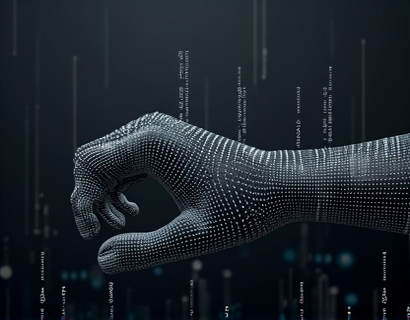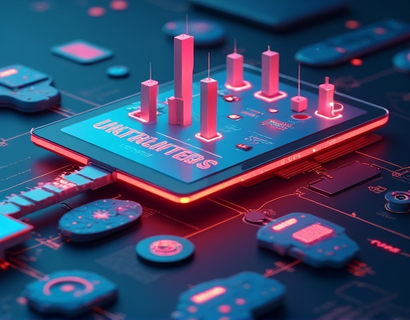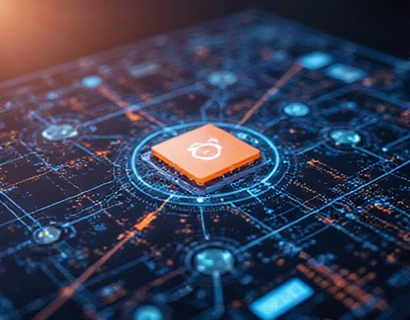Unlocking Enhanced Digital Experiences: Harnessing the Power of Crypto and AI for Advanced App Solutions
The integration of cryptocurrency and artificial intelligence (AI) is revolutionizing the digital landscape, offering unprecedented opportunities for tech professionals and early adopters. This article delves into the transformative impact of merging these two cutting-edge technologies, exploring how they are reshaping digital experiences and driving innovation. By understanding the synergy between crypto and AI, we can unlock new potentials in app development and user engagement, paving the way for a more secure, efficient, and personalized digital future.
The Convergence of Cryptocurrency and AI
The convergence of cryptocurrency and AI is not merely a technological curiosity but a powerful combination that enhances the capabilities of both domains. Cryptocurrency, with its decentralized and secure nature, provides a robust foundation for building trust and ensuring transparency in AI-driven applications. AI, on the other hand, brings intelligence, adaptability, and efficiency to the table, enabling systems to learn from data, recognize patterns, and make decisions with minimal human intervention.
When these technologies are combined, they create a synergistic effect that can significantly enhance digital experiences. For instance, AI can be used to optimize blockchain networks, improving transaction speeds and reducing energy consumption. Conversely, blockchain technology can provide a secure and immutable ledger for AI models and data, ensuring integrity and preventing tampering.
Enhancing Security through Crypto and AI
Security is a paramount concern in the digital world, and the combination of crypto and AI offers robust solutions to address various security challenges. AI algorithms can detect and mitigate threats in real-time, identifying anomalies and potential security breaches before they occur. This proactive approach is crucial in protecting sensitive data and maintaining user trust.
Blockchain technology, with its decentralized and cryptographic nature, adds an extra layer of security. Smart contracts, self-executing contracts with the terms directly written into code, can automate and enforce agreements without the need for intermediaries. This not only reduces the risk of fraud but also ensures that transactions are transparent and verifiable.
Moreover, AI can enhance the security of cryptocurrency wallets and exchanges by implementing advanced biometric authentication and behavioral analysis. These technologies can detect unusual activities and prevent unauthorized access, providing a higher level of security than traditional methods.
Personalization and User Experience
One of the most significant benefits of combining crypto and AI is the ability to create highly personalized digital experiences. AI algorithms can analyze user behavior, preferences, and interactions to deliver tailored content and services. This level of personalization enhances user engagement and satisfaction, leading to higher retention rates and more loyal users.
In the context of cryptocurrency, AI can optimize the user experience on blockchain platforms. For example, AI-driven interfaces can simplify complex blockchain operations, making them more accessible to non-technical users. This democratization of technology ensures that a broader audience can benefit from the advantages of crypto and AI.
Furthermore, AI can enhance the user interface and user experience (UI/UX) of apps by providing intuitive and adaptive designs. By learning from user interactions, AI can adjust the interface in real-time to meet individual needs, creating a seamless and efficient user journey.
Decentralized Applications (DApps) and AI
Decentralized Applications (DApps) are a prime example of how crypto and AI can collaborate to create innovative solutions. DApps leverage blockchain technology to operate on a decentralized network, ensuring transparency, security, and resilience. When AI is integrated into DApps, the potential for advanced functionalities becomes immense.
AI can enhance DApps by providing intelligent decision-making capabilities, predictive analytics, and automated processes. For instance, in finance, AI-powered DApps can offer sophisticated trading algorithms, risk assessment tools, and personalized financial advice. In healthcare, AI-driven DApps can analyze medical data to provide diagnostic insights and treatment recommendations.
The decentralized nature of DApps, combined with AI's analytical prowess, creates a powerful platform for innovation. Users can benefit from transparent, secure, and intelligent services that are not bound by traditional centralized systems.
Data Privacy and Ownership
Data privacy and ownership are critical issues in the digital age, and the integration of crypto and AI offers promising solutions. Blockchain technology ensures that data is stored securely and immutably, while AI can help manage and control data access and usage.
With AI, users can have more granular control over their data, deciding who can access it and for what purposes. Smart contracts can enforce these rules, ensuring that data is used in compliance with user preferences and regulations. This level of control empowers users and builds trust in digital platforms.
Moreover, the use of decentralized identity solutions, powered by AI and blockchain, can provide users with self-sovereign identity. This means that individuals can manage their digital identities without relying on centralized authorities, enhancing privacy and security.
Economic Incentives and Tokenization
The economic incentives provided by cryptocurrency can significantly enhance the adoption and utility of AI-driven applications. Tokenization, the process of converting assets into tokens on a blockchain, can create new economic models that align the interests of users and developers.
For example, AI models can be tokenized, allowing users to own and trade fractions of these models. This not only democratizes access to advanced AI technologies but also creates a new revenue stream for developers. Users can earn tokens by contributing data, providing computational power, or participating in the ecosystem, fostering a collaborative and incentivized environment.
Moreover, cryptocurrency can facilitate microtransactions and pay-per-use models, making it easier for users to access and utilize AI services without significant upfront costs. This flexibility can drive wider adoption and innovation in the field.
Challenges and Considerations
While the combination of crypto and AI offers numerous benefits, it also presents several challenges that need to be addressed. One of the primary concerns is the regulatory landscape. The decentralized and often anonymous nature of cryptocurrency can pose challenges for regulators, who are still grappling with how to oversee these technologies.
Another challenge is the technical complexity involved in integrating AI with blockchain systems. Developers need to possess a deep understanding of both domains to create robust and efficient solutions. Additionally, the energy consumption of blockchain networks, particularly those using proof-of-work consensus mechanisms, is a significant environmental concern that needs to be addressed.
Despite these challenges, the potential rewards of combining crypto and AI are substantial. By overcoming these obstacles, the tech community can unlock new possibilities for secure, personalized, and innovative digital experiences.
Conclusion
The fusion of cryptocurrency and AI is poised to transform the digital landscape, offering enhanced security, personalization, and economic incentives. As tech professionals and early adopters, embracing these technologies can lead to groundbreaking advancements in app development and user engagement. By staying at the forefront of this convergence, we can shape a future where digital experiences are not only more secure and efficient but also more empowering and inclusive.










































